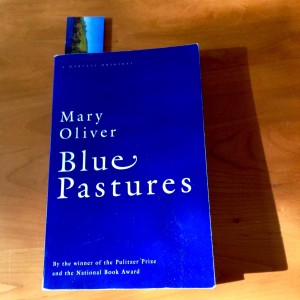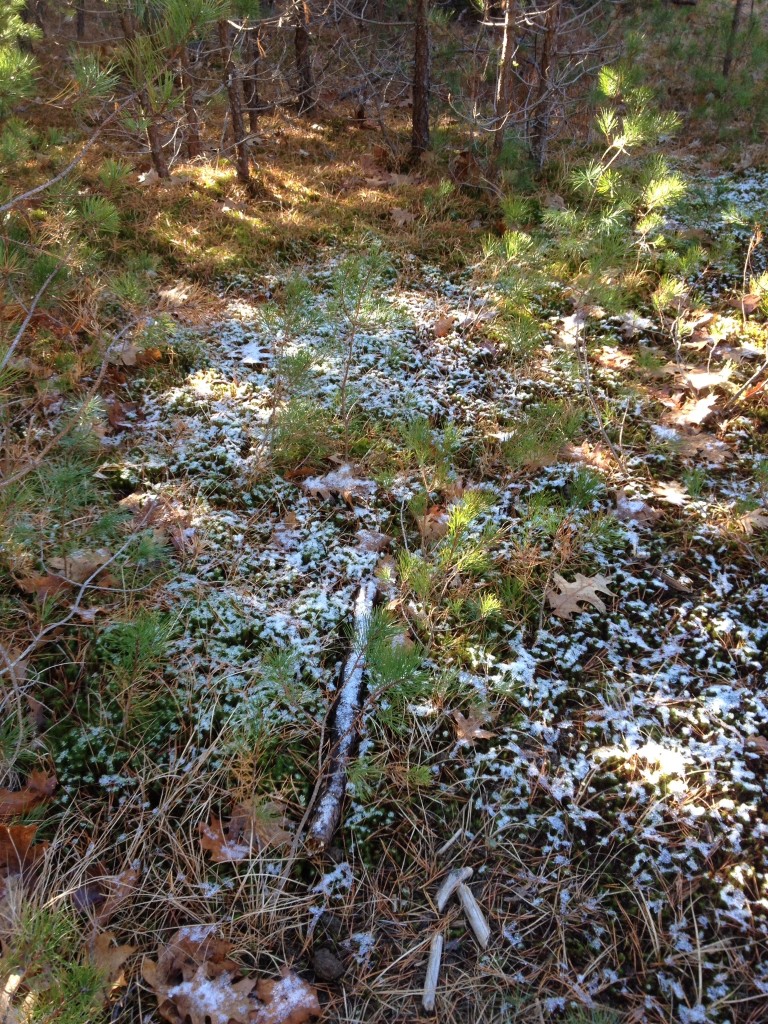First snow, early darkness – it’s book-reading season, and my purpose here is to lure you into reading the essay in this post’s title. Whatever I can offer for summary and comment pales beside the essay itself, and perhaps I should stop here, say simply, “Go, read this for yourself.” But command is no lure at all; it summons, if anything, our reflexive no-selves, well muscled from age two on. “Eat your vegetables; take a lap; brush your teeth; time’s up…” “No,” we say well before thought gathers. No? Okay, no command then.
So, here’s a bit of what I think Mary Oliver is up to in her luminous essay Steepletop, published in her first book of prose, Blue Pastures, in 1995. And why still, this whole sentence later, I think you should read it.
As a newly-minted high school graduate who is looking for a way out of Ohio, Oliver goes to visit Steepletop, from 1925 – 50 the New York state home of poet Edna St. Vincent Millay and her husband, Eugen Boissevain. Millay has died (as has Boissevain), and her sister Norma has taken up residence as holder of the family name and legacy of this poet who was the first woman to win the Pulitzer, an honor she got at age 31. There, through a series of visits that become finally residence, Oliver finds her first home away from home, and she finds a sort of older sibling figure in the poet’s sister and literary executor, Norma Millay. A young, aspiring poet, Oliver is taken in, but not, we learn in the essay, deceived by the stories she hears of Edna Millay’s tempestuous and brilliant life.
We as readers know also that Oliver herself has gone on to win a Pulitzer Prize and a National Book Award; she has become one of this country’s most loved poets. But in the recollections of the essay, all of that lies in the future as Oliver casts back to her memories of a time of genesis in her life.
And that sense of Oliver-in-making is what draws me into the essay, even as that is not its overt subject. It is written by a mature Oliver, one who has recently turned (submitted?) to the requests of prose, even as her poems are her central expression. That the writing is luminous in its particulars may go without saying, but I say it anyway: the writing shines in sentence and phrasing.
Steepletop makes central the story of Edna Millay’s grand passion for and with George Dillon. Millay’s long-running and then abruptly-ended affair with Dillon emerges to the young Oliver in family fits and starts, as told by Norma Millay. Oliver listens, then listens some more; her habit of attention, the wellspring of her poetry, is clear.
Here’s a small, but indicative moment: partway through her essay, Oliver offers a footnote. It concerns the 1931 publication of Millay’s Fatal Interview and Dillon’s The Flowering Stone, both of which draw from the long tempest of their affair. Oliver says she “knows this to be true.” And then she demurs, invokes a “mist that surrounds it forever,” that always obscures some essential truth or truths, some unknowable part of a life or lives.
To invoke obscuring mist so clearly, to make the reader know that all can’t be known, even as this story carries one on and much is known, that there is mystery at the heart of all heartsongs seems to me a good description of Mary Oliver’s gifts as a writer. In the clearest language she brings us into misty mystery, where we feel at least as much as we see.
There is, of course, much more in this essay, and in its volume, Blue Pastures. Earlier, I shed command. Now, I offer instead invitation: come read this essay…this book. It is a fine early winter afternoon’s companion; pair it with a cup of tea and take it to your favorite chair, where lamplight pools in the late afternoon dark.


